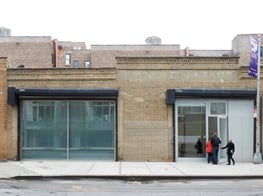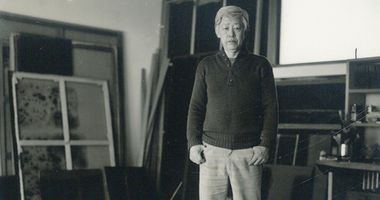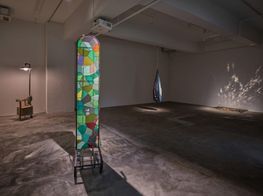Kim Inhye on Yun Hyong-keun’s Retrospective at Palazzo Fortuny
Yun Hyong-keun at Palazzo Fortuny, Venice, is the first international retrospective exhibition of the eponymous Korean artist's work since his death in 2007. Curated by Kim Inhye, the retrospective runs throughout the duration of the 58th Venice Biennale, which concludes on 24 November.
In this Ocula video, created for Ocula's IGTV, Kim provides an overview of the exhibition, discussing in particular a pair of works from the 1980s—a period during which Yun favoured umber rather than his characteristic combination of umber and blue.
Kim previously organised a retrospective for Yun that was shown at the National Museum of Modern Contemporary Art (MCCA) in Seoul (4 August 2018–6 February 2019). The exhibition in Venice provides an opportunity to see works from the MCCA exhibition as well as additional works that were not included previously because of space. The show in Venice is spread over three floors: early works from the 1970s on the first; those from the 1980s and 1990s on the second; and an insightful recreation of Yun's studio space in Seogyo-dong, Seoul, on the third, with his diary entries on view.
Yun was born in 1928 in Cheongju, Korea, during Japanese occupation, and lived the early decades of his adult life under state suspicion that he was a communist, a suspicion that developed after he was expelled from the Seoul National University (SNU) in 1947—where he had been accepted earlier that year to study Western painting—for participating in a left-wing student protest against the school's establishment by the United States Military Government in Korea.
During the Korean War, Yun's record at the SNU led him to be sentenced to death; upon escaping his fate by hiding in a forest, he was coerced to work for the North Korean Army, for which he served six months in prison after the war ended. The bright colours in Yun's early abstract paintings that appear in the Venice exhibition show the influence of Kim Whanki, a prominent modern Korean artist and his lifelong mentor, friend, and father-in-law. However, Yun began to work with more sombre hues after he resigned from his teaching position at Sookmyung Girls' High School in 1973; the artist had spoken out against the corruption in the school's admission system, only to find himself arrested on false charges of being a communist. He was released after promising his resignation.
Under state surveillance for almost ten years, Yun committed himself to art, developing his unique palette of umber and blue—made by mixing oil turpentine with pigment—and experimenting with the absorbing ability of hanji, cotton, and linen. A common composition in Yun's paintings consists of two black columns on either side of the canvas, such as in Umber-Blue (1978). The blank space in between the black forms evokes a pathway into a new world or 'the gate of heaven and earth', as the artist described his painting practice, where blue represents the heaven and umber the earth.
Yun is closely associated with Dansaekhwa, a post-war art movement in Korea that witnessed artists pioneering abstract painting in the country and using humble materials to explore the physicality and surface of painting. As Kim notes in an interview with Ocula Magazine in Yun Hyong-keun in Venice: The Artist Behind the Paintings, however, Yun did not wish to be categorised as a Dansaekhwa artist.
Palazzo Fortuny, located in San Marco, central Venice, is a museum that once belonged to the innovative Spanish fashion designer Mariano Fortuny (1871–1949). Alongside Yun's retrospective, Palazzo Fortuny has on view the exhibition The Fortuny: A Family Story, focusing on the work of Mariano and his father—who was also a renowned artist—for the duration of the Biennale.—[O]












































































































































































